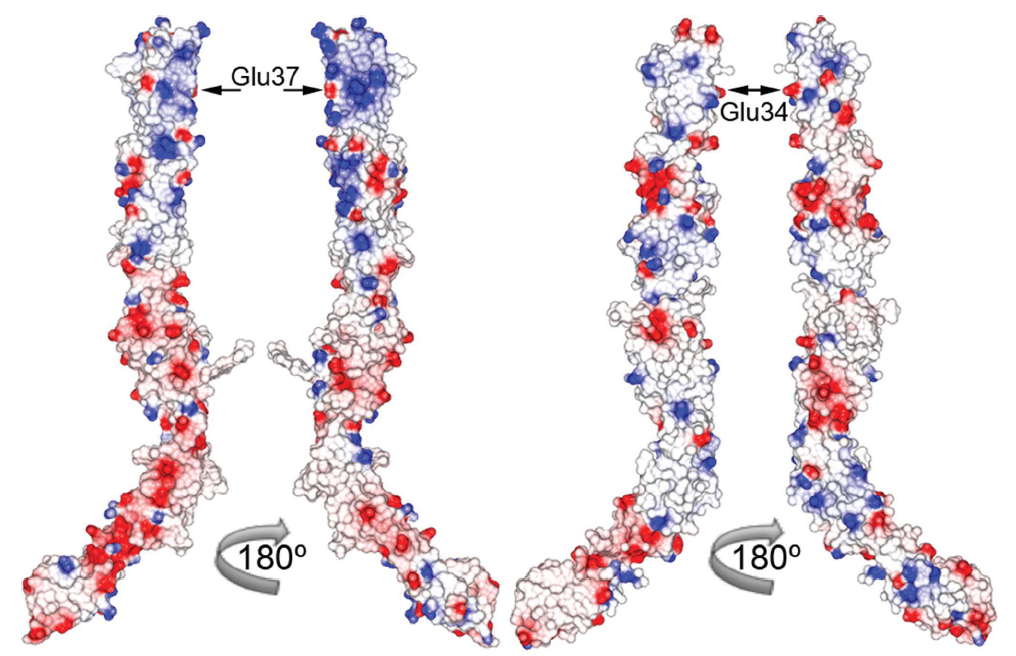Acta Crystallogr D Biol Crystallogr. 2014; 70 (Pt 7): 1934-1943.
Recacha R, Jiménez D, Tian L, Barredo R, Gahmberg CG, Casasnovas JM.
 Intercellular cell adhesion molecule-5 (ICAM-5) is a member of the ICAM subfamily that is exclusively expressed in the telencephalon region of the brain. The crystal structure of the four most N-terminal glycosylated domains (D1-D4) of ICAM-5 was determined in three different space groups and the D1-D5 fragment was modelled.
Intercellular cell adhesion molecule-5 (ICAM-5) is a member of the ICAM subfamily that is exclusively expressed in the telencephalon region of the brain. The crystal structure of the four most N-terminal glycosylated domains (D1-D4) of ICAM-5 was determined in three different space groups and the D1-D5 fragment was modelled.
The structures showed a curved molecule with two pronounced interdomain bends between D2 and D3 and between D3 and D4, as well as some interdomain flexibility. In contrast to ICAM-1, ICAM-5 has patches of positive and negative electrostatic charge at D1-D2 and at D3-D5, respectively. ICAM-5 can mediate homotypic interactions. In the crystals, several charge-based intermolecular interactions between the N-terminal and C-terminal moieties of the ICAM-5 molecules were observed, which defined an interacting surface in the D1-D4 fragment. One of the crystal lattices has a molecular assembly that could represent the homophilic ICAM-5 cell adhesion complex in neurons.
